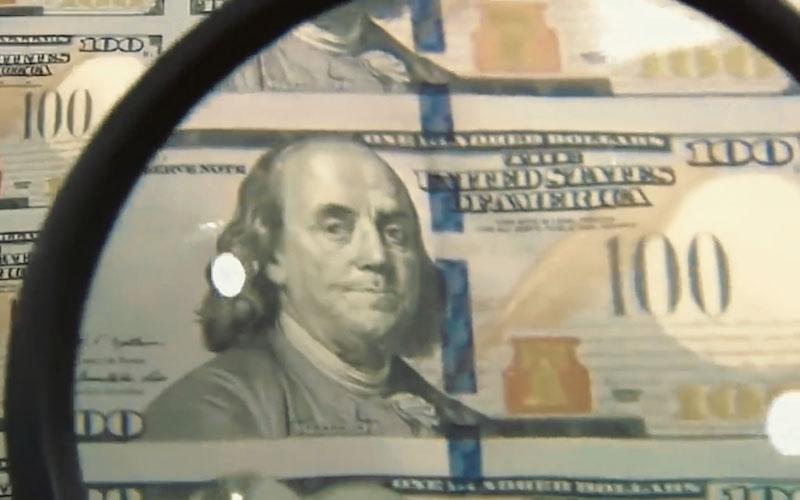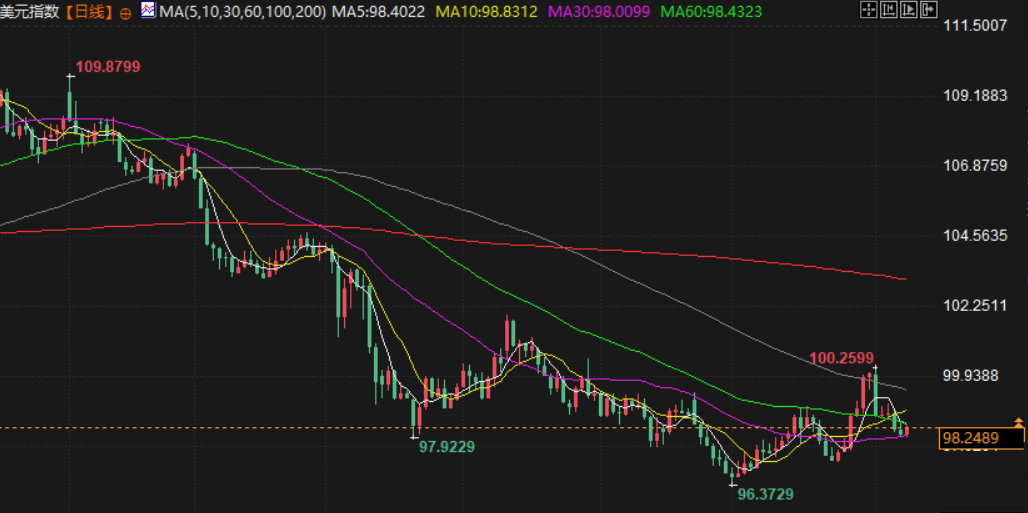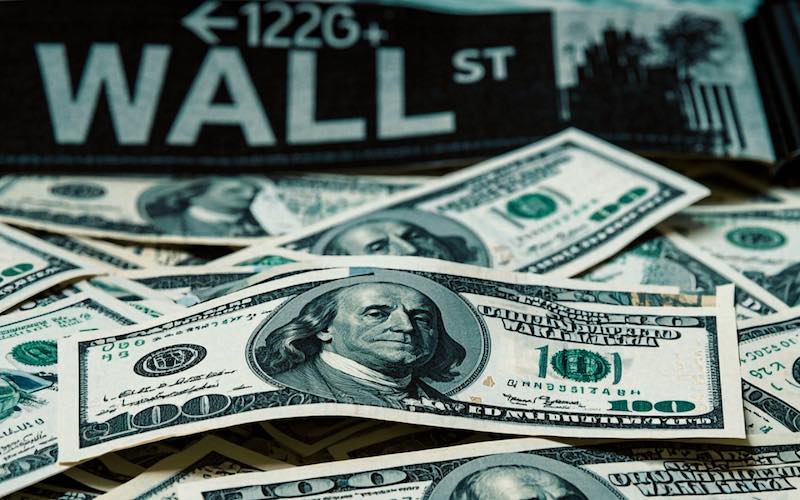The US dollar closed lower this week! Weak data reinforced expectations of a rate cut, and Trump's Fed nomination roiled the market.
2025-08-09 07:30:32

The dollar has fallen since last week's July jobs report showed employers added fewer jobs than expected that month, while job gains for prior months were also revised sharply downward. Goldman Sachs said U.S. nonfarm payrolls for May and June were revised downward by a combined 258,000, the largest two-month downward revision since 1968. The preliminary estimate of the benchmark nonfarm payrolls released in September is expected to be revised down further by 550,000 to 950,000.
Other data, including weak housing and services figures, also suggest the economy is slowing. Meanwhile, Trump said Thursday he would nominate Council of Economic Advisers Chairman Milan to fill the final months of a vacant Federal Reserve governor seat, while the White House seeks a permanent member of the Fed's board of governors and continues its search for a new Fed chair.
Trump nominated Stephen Milan to temporarily fill a vacancy on the Federal Reserve Board of Governors, a move seen by markets as a possible shift by the central bank to a more accommodative monetary policy stance.
Milan has also been a harsh critic of the Federal Reserve's policy implementation since the 2008-09 financial crisis, arguing that the Fed has too frequently blurred the lines between fiscal and monetary policy. Milan, who has criticized the "revolving door" between the executive branch and the Fed, co-authored a report for the Manhattan Institute last year in which he proposed addressing what he sees as a range of Fed ills, from "herd mentality" in monetary policy to excessive regulation, a lack of accountability, and a lack of focus on its core mission: fighting inflation. He wrote that to regain the benefits of the Fed's independence from political control, that independence must end.
Bloomberg News reported on Thursday that Fed Governor Stephen Waller, who voted for a rate cut at the Fed's last meeting, is emerging as a leading candidate to succeed Jerome Powell as chairman after his term ends in May.
"That leaves those on the FOMC potentially more inclined toward rate cuts," said Shaun Osborne, chief currency strategist at Scotiabank. "The impression is that the Fed could move toward rate cuts sooner than the market had previously anticipated, especially based on expectations prior to last week. There might even be speculation that the Fed could cut more aggressively than we had previously anticipated."
Traders now see an 89% chance of a rate cut at the Fed's September meeting, and a 58 basis point reduction by year-end.
On Friday, Trump also fired a senior Labor Department official following a weak jobs report, sparking concerns that his administration could exert greater influence over economic data releases.
Despite this, the dollar index rose on Friday, which Osborne said could be a consolidation, with no new news driving the dollar index's direction. The dollar index rose 0.21% to 98.19 points in late trading, down about 0.5% this week.
Bank of America's foreign exchange and interest rate analysts noted that among fund managers surveyed, shorting the dollar remains the most confident trade for the rest of the year. The next key U.S. economic data will be July consumer price data, due on Tuesday, which will be closely watched for signs of whether tariffs will reignite inflationary pressures.
St. Louis Fed President Joseph Musallem said on Friday that the Federal Reserve currently faces dual risks to its inflation and employment goals, and policymakers need to weigh which threat appears more serious when deciding whether it is appropriate to cut interest rates.
The euro fell 0.09% to $1.1655. Angel Talavera of Oxford Economics said the European Central Bank may hold off on cutting interest rates in September as inflation stabilizes at its target.
Data released last week showed that inflation held steady at 2.0% in July. Talavera said this development could give the ECB's Governing Council pause on cutting borrowing costs again; the ECB held its deposit rate at 2.0% last month. "While we still expect inflation to moderate in the coming months, we do not believe that progress on inflation will be sufficient to warrant another rate cut by the Governing Council," he wrote in a note to investors.
Talavera said the ECB could cut interest rates later this year if inflation showed signs of slowing, but it could also decide to keep rates at current levels.
USD/JPY rose 0.41% to 147.71. Bank of Japan policymakers debated the possibility of resuming interest rate hikes, with one suggesting a hike was possible this year, and the summary of the July meeting showed an increased likelihood of a near-term rise in borrowing costs.
The Bank of Japan's meeting minutes released on Friday said that if the Bank of Japan's outlook for economic activity and prices is realized, the Bank of Japan will continue to raise its policy interest rate and adjust the degree of monetary easing in accordance with improvements in economic activity and prices.
Sterling rose 0.06% to $1.3451, having earlier hit a two-week high of $1.3458. The Bank of England cut interest rates on Thursday, but the move was narrowly approved by a 5-4 vote, signaling a lack of confidence in its easing policy.
Bank of England chief economist Huw Pill said on Friday that inflationary pressures are likely to continue to weaken, but future interest rate cuts may be delayed by changes in the economy's price and wage setting behavior in the medium and long term.
"If that was the bigger driver of increased upside risks to inflation, that might lead us to question whether the pace of rate cuts we've been taking over the past year, which has been a quarter-point pace, is sustainable?" he said. "I think that was the focus of the dissenting MPC members who ultimately voted yesterday to maintain rates at 4.25%."
The Bank of England cut its benchmark bank rate to 4.0% from 4.25% on Thursday, but Peel and three other MPC members preferred to remain on hold due to inflationary pressures. The vote was unexpectedly close at 5:4 to approve the rate cut.
The result makes it more likely that the Bank of England will slow its string of interest rate cuts. Market prices show investors don't expect the Bank of England to cut another quarter percentage point until February next year.

- Risk Warning and Disclaimer
- The market involves risk, and trading may not be suitable for all investors. This article is for reference only and does not constitute personal investment advice, nor does it take into account certain users’ specific investment objectives, financial situation, or other needs. Any investment decisions made based on this information are at your own risk.





















